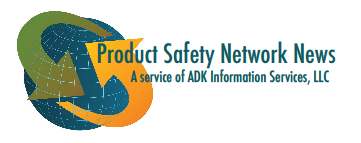SAMSUNG CONTINUES REELING FROM PRODUCT CRISIS
>Samsung expands recall of Galaxy Note7 smartphone based on additional incidents with replacement phones
October 13, 2016, cpsc.gov
The company and the U.S. Consumer Product Safety Commission expanded the recall of Galaxy Note7 smartphones following additional incidents with replacement phone and the danger of serious fire and burn hazards. The announcement covers all Galaxy Note 7 devices received as replacement of the previous Galaxy Note7 recall on September 15, and any Galaxy Note7 with a green battery icon, regardless of the date purchased.
>Samsung says it’s going to ‘dispose of’ every Galaxy Note7 handset
October 12, 2016, neowin.net
Samsung has ceased production of the Galaxy Note7. The ill-fated handset was ultimately doomed after a series of incidents in which replacement units that were sent to some customers- following an earlier recall of the first batch of devices- also caught fire, making the end of the Galaxy Note7 inevitable. The company won’t be refurnishing or repairing any of the recalled units.
>Note7 fiasco could burn a $17 billion hole in Samsung’s accounts
October 11, 2016, Reuters
Samsung Electronics worst-ever recall could cost the company as much as $17 billion after it halted sales of its flagship Galaxy Note7 for a second time, spelling an almost certain end for the ill-fated premium model. The company asked mobile carriers to stop sales or exchanges of the $882 device and asked users to shut off their phones while it investigated new reports of fires in replacement Note7s. Analysts had expected the Note7 sales to hit almost 19 million units during its product cycle, equating to nearly $17 billion in lost revenue.
California Attorney General issues new Proposition 65 enforcement regulations
October 5, 2016, Keller and Heckman
On September 1, 2016, the California Attorney General’s office issued final regulations regarding the private enforcement of Proposition 65, (i.e., California’s Safe Drinking Water and Toxic Enforcement Act of 1986). The requirements are intended to: limit the settlement funds that are currently diverted away from the State’s Office of Environmental Health Hazard Assessment, the agency that administers Proposition 65; increase the transparency and judicial review of settlements in private party Proposition 65 cases; and reduce the financial incentives for private enforcers to bring, and for defendants to settle, Proposition 65 cases that do not confer a significant public benefit. The new regulations went into effect on October 1, 2016.
A few states adopt chemical legislation despite TSCA reform
October 14, 2016, National Law Review (Beveridge & Diamond)
State legislatures continue to consider legislation to restrict chemicals even as, at the federal level, the Toxic Substance Control Act has been thoroughly overhauled by the Frank R. Lautenberg Chemical Safety for the 21st Century Act. Over 60 bills to restrict chemicals in various ways were introduced earlier this year, including 3 bills that have been enacted ( in the District of Columbia, Washington, and New York).
Despite expected rise in regulatory scrutiny, few are prepared to manage product safety crises
October 5, 2016, PRNewswire
While 42.1 percent of respondents to a recent poll expect government agency scrutiny of product safety to increase through 2017, just 15.1 percent are fully prepared to manage a product safety or quality crisis. The poll, conducted by Deloitte, reported that one-fifth of respondents experience a business disruption due to a product compliance, safety, or quality issue within the past 12 months.
Science, safety, and sales: the hockey helmet marketing problem
October 9, 2016, theglobeandmail.com
A University of Ottawa lab that is also part of a larger debate about just how far science has come in understanding concussions, is heavily equipped with “head forms” that are built to take a beating. The Neurotrauma Impact Science Laboratory contains devices designed to ram the heads from all directions, helping scientists to make computer models of each hit. These impacts can show how force is transmitted through the head from hits of different speed, duration and angles, helping researchers calculate the types of strain that can lead to head injuries. The lab is also part of the debate over what companies who make protective gear are allowed to say about their ability to limit the risk in contact sports.
Commission updates EU eco label criteria for computers, furniture and footwear
October 9, 2016, retaildetail.eu
The European Commission has issued stricter criteria that manufacturers will have to comply with in order to conform to the EU Ecolabel scheme for computers, furniture, and footwear. Manufacturers will need to comply with new guidelines focusing on environmental performance, product safety, and fair labor standards if they want their products to carry the EU Ecolabel in the future.
Should safety worries rob fun out of theme park rides?
October 8, 2016, Bloomberg BNA
Before 1981, the Consumer Product Safety Commission regulated the safety of fixed amusement park rides. Bu Congress limited the agency’s authority in a biter budget deal, and future attempts at reversing that restriction have failed. The result is that amusement and carnival park rides are haphazardly regulated for safety at the state level, leading to conflict between those holding opposite opinions on the effectiveness of the current state of affairs.
After water fiasco trust of officials is in short supply in Flint
October 9, 2016, New York Times
In Flint, Michigan, a new city-operated program offers homeowners the chance to replace aging, corroded lead waterlines with new copper pipe. Despite this, some homeowners still will not drink the water one year after public officials declared it unhealthy. “I don’t even give it to my dog,” says one. “I don’t care what they say. How can I trust them again?” Meanwhile, an investigation continues into the failed response by local, state, and federal officials to the crisis that erupted over lead-tainted water that has threatened public health.


